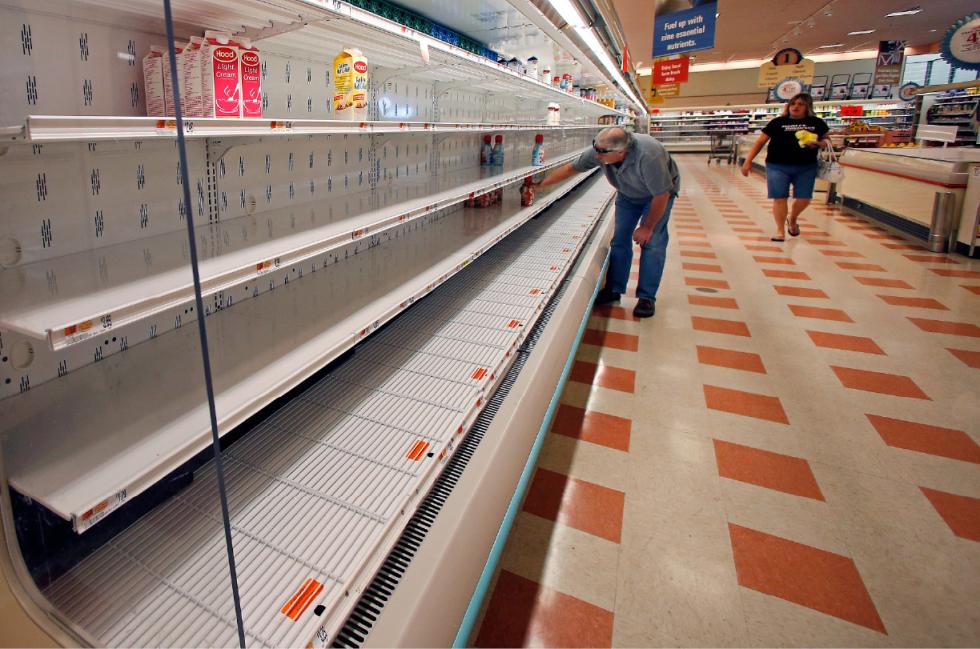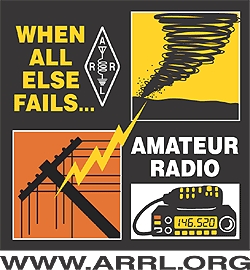By: Chris Warren.
As I discussed in my last article, being ready for emergencies is not just for whackos. The other half of the equation is that a “disaster” does not have to come in the form of an epic 300 foot tidal wave or alien invasion.
Overnight, my territory in the upper Midwest USA got clobbered by about ten inches (25 cm) of snow, with about another 4-8 inches (10-20 cm) still to come before it’s over. The temperature, which is actually above freezing right now, is expected to drop to 5F (-15c) before sundown, then the high winds will kick in.
By local standards, this storm is not a particularly big deal. Yet there are people who will face serious weather-related problems that could have been entirely avoided with even a little planning. Already, I’ve had to give some gas to a guy up the road because he ran out and needed to fill the tank on his snowblower. This storm was predicted three or four days ago. Why didn’t he fuel up when he had the chance? I just don’t get it. There will be fatalities because of this storm.
The following is a pictorial account of my life during a snow storm. I took all the photos myself.
 This photo was taken from my kitchen window. It looks very pretty and serene. But beyond the backyard things get rough.
This photo was taken from my kitchen window. It looks very pretty and serene. But beyond the backyard things get rough.
 This is as about as “plowed” as it’s going to get for a while. I saw very few cars on the road, only 4×4’s. Everyone else is stuck at home. Even in my big truck, it was a challenge getting around.
This is as about as “plowed” as it’s going to get for a while. I saw very few cars on the road, only 4×4’s. Everyone else is stuck at home. Even in my big truck, it was a challenge getting around.
 The temperature has dropped from almost 35F (1.6C) when this photo was taken about an hour ago to 31 (-0.5C) now. It also went from no wind to a modest breeze. I can’t get a wind speed because the weather instruments are frozen. Strong winds are expected later today.
The temperature has dropped from almost 35F (1.6C) when this photo was taken about an hour ago to 31 (-0.5C) now. It also went from no wind to a modest breeze. I can’t get a wind speed because the weather instruments are frozen. Strong winds are expected later today.
 The weather alarm does not lie. It’s going to get worse before it gets better. As much as I trash on the government in this blog, I have to be fair and say NOAA and their network of radio stations is a very valuable and worthwhile public service.
The weather alarm does not lie. It’s going to get worse before it gets better. As much as I trash on the government in this blog, I have to be fair and say NOAA and their network of radio stations is a very valuable and worthwhile public service.

 It is not possible to overstate the importance of amateur radio in times of mayhem. It requires almost no special infrastructure and can be run on backup power. There are hundreds of thousands of amateur radio operators in the Unites States alone. None of them are paid for their services and nearly all supply their own equipment. When there are no cell towers, internet, or landline phones, ham radio is there. Always. It’s the ultimate “mesh network” that is almost impossible to to take down. The top photo of UHF & VHF antennas is just a portion of my rooftop communications complex. The center photo is my HF (shortwave) radio capable of worldwide communications and a 75 watt 2-meter VHF radio, with a range of about 25-30 miles (40-48 km). The VHF is especially valuable when the public communications system goes down. All of this equipment is powered by off-grid solar energy.
It is not possible to overstate the importance of amateur radio in times of mayhem. It requires almost no special infrastructure and can be run on backup power. There are hundreds of thousands of amateur radio operators in the Unites States alone. None of them are paid for their services and nearly all supply their own equipment. When there are no cell towers, internet, or landline phones, ham radio is there. Always. It’s the ultimate “mesh network” that is almost impossible to to take down. The top photo of UHF & VHF antennas is just a portion of my rooftop communications complex. The center photo is my HF (shortwave) radio capable of worldwide communications and a 75 watt 2-meter VHF radio, with a range of about 25-30 miles (40-48 km). The VHF is especially valuable when the public communications system goes down. All of this equipment is powered by off-grid solar energy.
 The snow covered angled items on the roof in the top photo are a few of my solar panels. The bottom photo is the charge controller for the solar power. The photo was taken during daylight but due to all the snow on the solar panels, the system thinks it it night time and shut itself down. The 12.8 volts on the battery means I have a good charge and should be ok…for now. We are not expected to have any real sun for a few days, so at some point I’ll probably have to change my batteries off the generator.
The snow covered angled items on the roof in the top photo are a few of my solar panels. The bottom photo is the charge controller for the solar power. The photo was taken during daylight but due to all the snow on the solar panels, the system thinks it it night time and shut itself down. The 12.8 volts on the battery means I have a good charge and should be ok…for now. We are not expected to have any real sun for a few days, so at some point I’ll probably have to change my batteries off the generator.
 Sometimes life here can be a real pain in the ass, but it is a great feeling to be in a nation where I can make my own choices and fly or fall on my own. For my readers outside the USA, it is customary for Americans to display a flag on their homes. Flags are most often seen on patriotic holidays or in times of war, but at my house, the flag is out 24 hours a day, every day. It is the symbol of a land and people who are not easily beaten down.
Sometimes life here can be a real pain in the ass, but it is a great feeling to be in a nation where I can make my own choices and fly or fall on my own. For my readers outside the USA, it is customary for Americans to display a flag on their homes. Flags are most often seen on patriotic holidays or in times of war, but at my house, the flag is out 24 hours a day, every day. It is the symbol of a land and people who are not easily beaten down.





